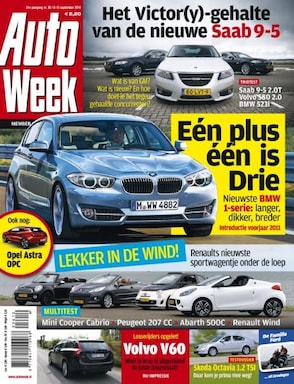 In Sanoma Uitgevers BV v The Netherlands Application no 38224/03 (14 September 2010) (Inforrm’s Blog | Index on Censorship Free Speech Blog | JuraBlogs), the Grand Chamber of the European Court of Human Rights (ECHR) has held that an order for the compulsory surrender of journalistic material which contained information capable of identifying journalistic sources requires legal procedural safeguards commensurate with the importance of the principle at stake. This is an important standard, and the actions of the Dutch authorities failed to meet it. An order to disclose journalistic material was made by a public prosecutor, whom the Court considered to be a party rather than impartial, so that there was no independent assessment as to whether the interest of a criminal investigation overrode the public interest in the protection of journalistic sources. As a consequence, the Court unanimously held that there was a violation of Article 10 of the European Convention on Human Rights.
In Sanoma Uitgevers BV v The Netherlands Application no 38224/03 (14 September 2010) (Inforrm’s Blog | Index on Censorship Free Speech Blog | JuraBlogs), the Grand Chamber of the European Court of Human Rights (ECHR) has held that an order for the compulsory surrender of journalistic material which contained information capable of identifying journalistic sources requires legal procedural safeguards commensurate with the importance of the principle at stake. This is an important standard, and the actions of the Dutch authorities failed to meet it. An order to disclose journalistic material was made by a public prosecutor, whom the Court considered to be a party rather than impartial, so that there was no independent assessment as to whether the interest of a criminal investigation overrode the public interest in the protection of journalistic sources. As a consequence, the Court unanimously held that there was a violation of Article 10 of the European Convention on Human Rights.
The case concerned illegal car races being investigated by the Dutch magazine Autoweek, published by Sanoma Uitgevers BV. The journalists took photographs and made notes, but edited the published photographs to guarantee the anonymity of the participants in the race. The participants in the illegal race were suspects in other serious crimes, and the public prosecutor took the view that the need to identify them justified a summons ordering the production of the CD-ROM on which the original photographs were stored. The Third Section of the ECHR held that this did not infringe Art 10 (a decision which I criticised at the time). On appeal, the Grand Chamber has now made amende honorable.
Article 10 of the Convention provides:
1. Everyone has the right to freedom of expression. This right shall include freedom to hold opinions and to receive and impart information and ideas without interference by public authority and regardless of frontiers. This article shall not prevent States from requiring the licensing of broadcasting, television or cinema enterprises.
2. The exercise of these freedoms, since it carries with it duties and responsibilities, may be subject to such formalities, conditions, restrictions or penalties as are prescribed by law and are necessary in a democratic society, in the interests of national security, territorial integrity or public safety, for the prevention of disorder or crime, for the protection of health or morals, for the protection of the reputation or rights of others, for preventing the disclosure of information received in confidence, or for maintaining the authority and impartiality of the judiciary.
This article embodies a four-part analytical structure: if there is a restriction upon the right to freedom of expression, the State must have a good reason to justify the restriction which can withstand scrutiny or review. In the language of the Article, the restriction must be “prescribed by law“; and the jurisprudence of the Court establishes the standard of scrutiny or review is that the restriction must be proportionate to the relevant reason provided for in the second paragraph. The Third Section held that the public prosecutor’s order constituted a restriction prescribed by law, and that the order was proportionate to the “prevention of disorder or crime”. The Grand Chamber held that, in the absence of sufficient safeguards, the public prosecutor’s order was not prescribed by law; and it did not therefore ned to reach the question of whether it was proportionate. For all that the decision establishes very important safeguards for the protection of journalists’ sources, I am nevertheless disappointed that the Grand Chamber did not consider whether the restriction would have been proportionate. In my view, the Third Section entirely misapplied the principle of proportionality; and the Grand Chamber should have taken the opportunity to deprecate the Section’s reasoning. But this is to nitpick.
For now, the important thing is that the decision of the Grand Chamber establishes a significant standard for the protection journalists’ sources. Unfortunately, it might mean that Top Gear will have to be considered journalism!
This decision still leaves open a question that puzzles me. To what extent does the ECHR protection extend to indirect attempts to identify sources – attempts which don’t rely on measures directed to the journalist or media organisation? For example, will the priniciple apply to the use of journalists’ mobile phone records and data retention where the party obliged to produce material is the telephone company rather than the journalist?
The court does cite the Council of Europe Committee of Ministers Recommendation No. R(2000) 7 on the right of journalists not to disclose their sources of information, which attempts to provide for this situation in its second principle:
Principle 2 (Right of non-disclosure of other persons)
Other persons who, by their professional relations with journalists, acquire knowledge of information identifying a source through the collection, editorial processing or dissemination of this information, should equally be protected under the principles established herein.
However, there’s no discussion of this point, leaving it unclear whether the ECtHR would accept that this principle applies.